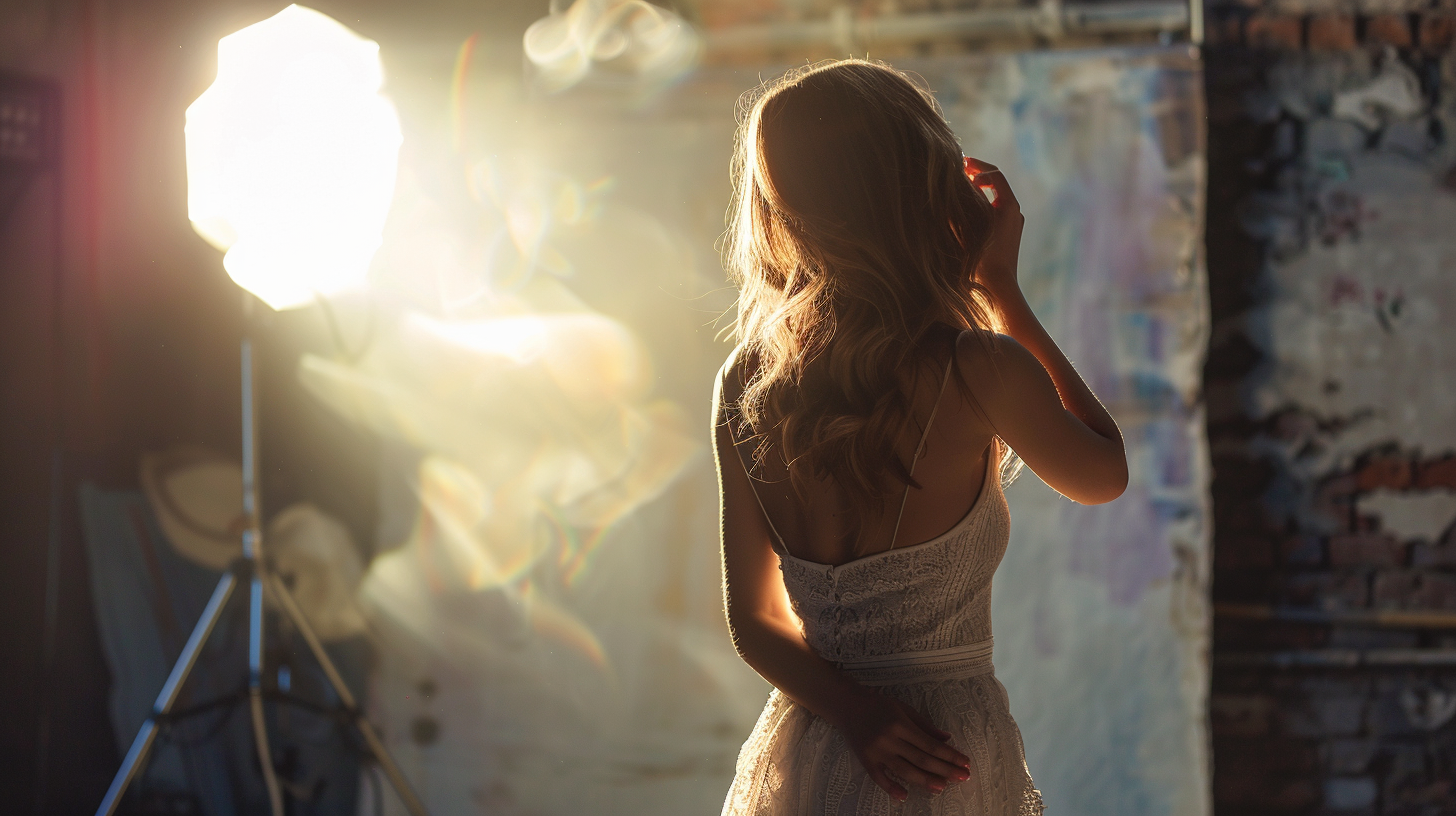Key points
• Planning is key: It’s important to get ready for a photo shoot properly, whether it’s picking your clothes, finding the perfect spot, or settling on a concept. I recall a time when I didn’t check the forecast before a shoot – big mistake. We were left rushing to find somewhere inside to shoot.
• Talking to your photographer: Being on the same page as your photographer makes a huge difference. The shoots where the photographer put me at ease are the ones where my real feelings showed up in the photos – that was a game changer.
• The art of editing: Good editing can turn a decent photograph into an amazing one. But it shouldn’t change how you look completely. I’ve looked at some pictures that were so edited, I couldn’t even tell it was me! Just a bit of editing can really bring out your looks without overdoing it.
Contents
- Key points
- Gather all necessary equipment
- Why scout the location beforehand?
- How To Talk to Your Team and Customers?
- Get Lighting Right
- Talk Well With Models
- Be Creative and Care About Details
- Match the Location to the Theme
- Check Out the Light First
- Think About Getting There and Permissions
- Choosing Backdrops and Props
- Messing With Lighting Setups
- Making it Snug for Folks
- Golden Hour Glow
- Bouncy Boards for Shadows
- Cleaning Up Camera Settings
- Picking Smart Artificial Lights
- What Camera Settings Should You Use?
- Aperture, Shutter Speed, and ISO
- Getting Colors Right with White Balance
- Try Manual Mode
- Keeping Your Camera Still
- Tripods and Long Exposures
- Keeping Shots Consistent
- Catching Spontaneous Moments
- Relaxed Faces Are Best
- Telling Stories with Photos
- Giving Clear Directions
- Natural Smiles Are Everything
- Making Small Tweaks
- Paying Attention to Body Language
- Being Dynamic with Poses
- Personalizing Poses
- Tips Table
- Making Friends Comes First
- Giving Tips as You Go
- Setting the Right Vibe
- Getting Good Group Shots
- Posing Each Person Well Within Fairness
- Maintaining Group Mood
- Group Photo DOs
- Tips Recap:
- How Do You Take Action Shots?
- Why Should You Use Props?
- Props Improve Your Photos
- Make Your Photos Pop
- Pick the Right Props
- Nature as the Perfect Backdrop
- Adapt to Sunlight Changes
- Work With the Weather
- Prep for Bad Weather
- Creative Shots in Bad Weather
- Keep Your Gear Safe
- Indoor Lighting Mastery
- Create a Consistent Environment
- Use Space Efficiently
- Getting Good Takes Skill
- The Importance of Color Theory
- Finding Good Color Combos
- Evoke Feelings with Color
- Balanced Colors Work Best
- Making an Impact
- Show Off Contrast and Texture
- Giving Shape Attention
- No Lazy Conversions
- How Do You Perform Portrait Photography?
- Capturing the essence of the subject
- Focusing on facial expressions and emotions
- Creating a connection with the subject
- Adapting Poses and Interactions for Different Ages
- Creating a Comfortable Environment for Children
- Highlighting Character and Wisdom in Older Subjects
- Reflecting the company’s brand and values
- Creating professional headshots and group photos
- Emphasizing teamwork and corporate culture
- Additional tips
- Documenting everyday moments authentically
- Showcasing a specific lifestyle or activity
- Creating aspirational and relatable images
- Capturing Key Moments and Emotions
- Documenting the Atmosphere and Details
- Adapting to Fast-Paced and Unpredictable Situations
- How Can You Capture Candid Moments?
- How Can You Highlighting Product Features and Details?
- Why Should You Develop A Unique And Creative Concept
- How Do You Create Professional and Engaging Headshots?
- How To Tell A Visual Story Through Editorial Images?
- Why Is Exploring Artistic Concepts and Themes Important?
- What Should You Be Using Post-Processing?
Gather all necessary equipment

Nothing’s worse than getting to your photo spot and remembering you left your memory cards behind. Double-check your bag for everything: cameras, lenses, and tripods, as well as lights, spare batteries, and chargers. Pack any props you’ll need too. It’s smarter to bring too much than to wish you had later on.
Why scout the location beforehand?
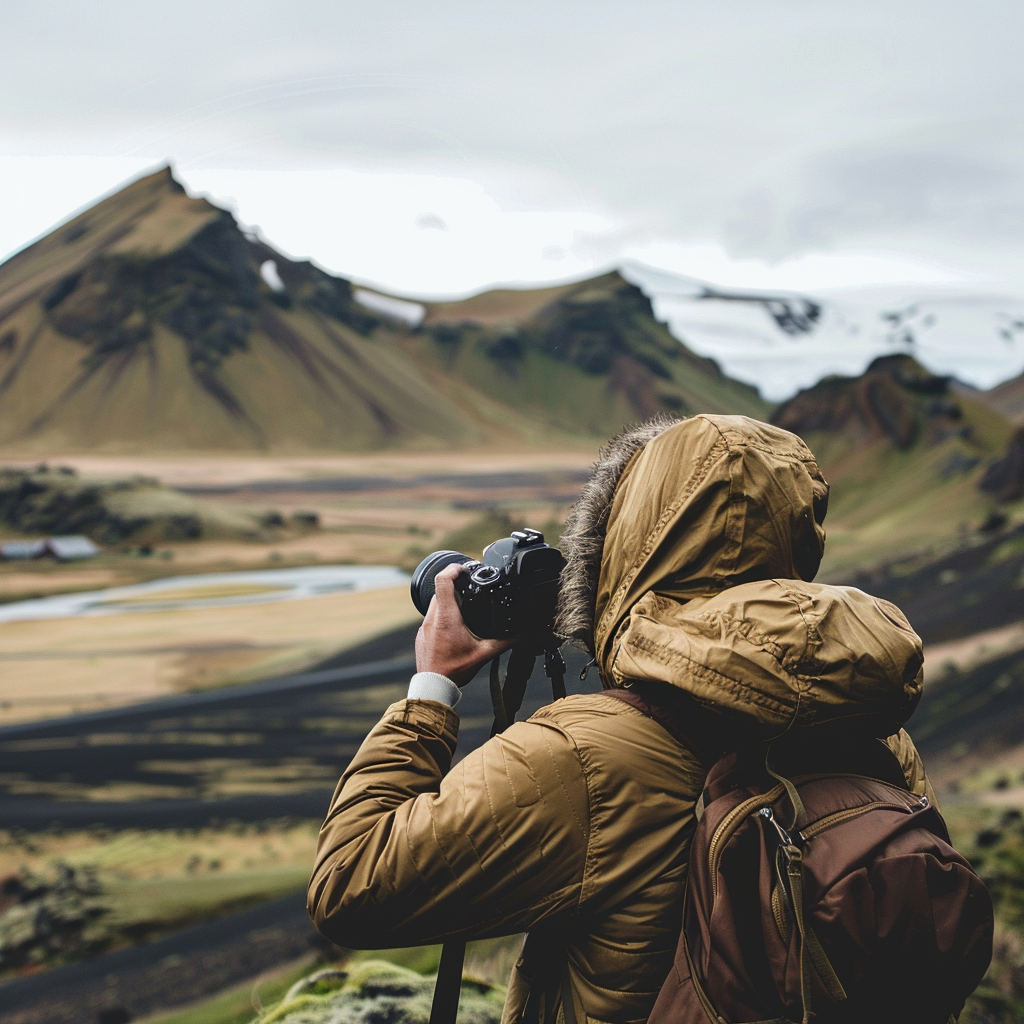
Don’t go in blind; check out your shooting location before the day comes. When you scout ahead, you can figure out how daylight plays with the scene throughout the day. You’ll also spot good places to take your shots, find nice backgrounds, and notice anything risky that could cause problems. Knowing the area well will cut down on wasted time and headaches when you’re out there trying to get the perfect shot.
How To Talk to Your Team and Customers?
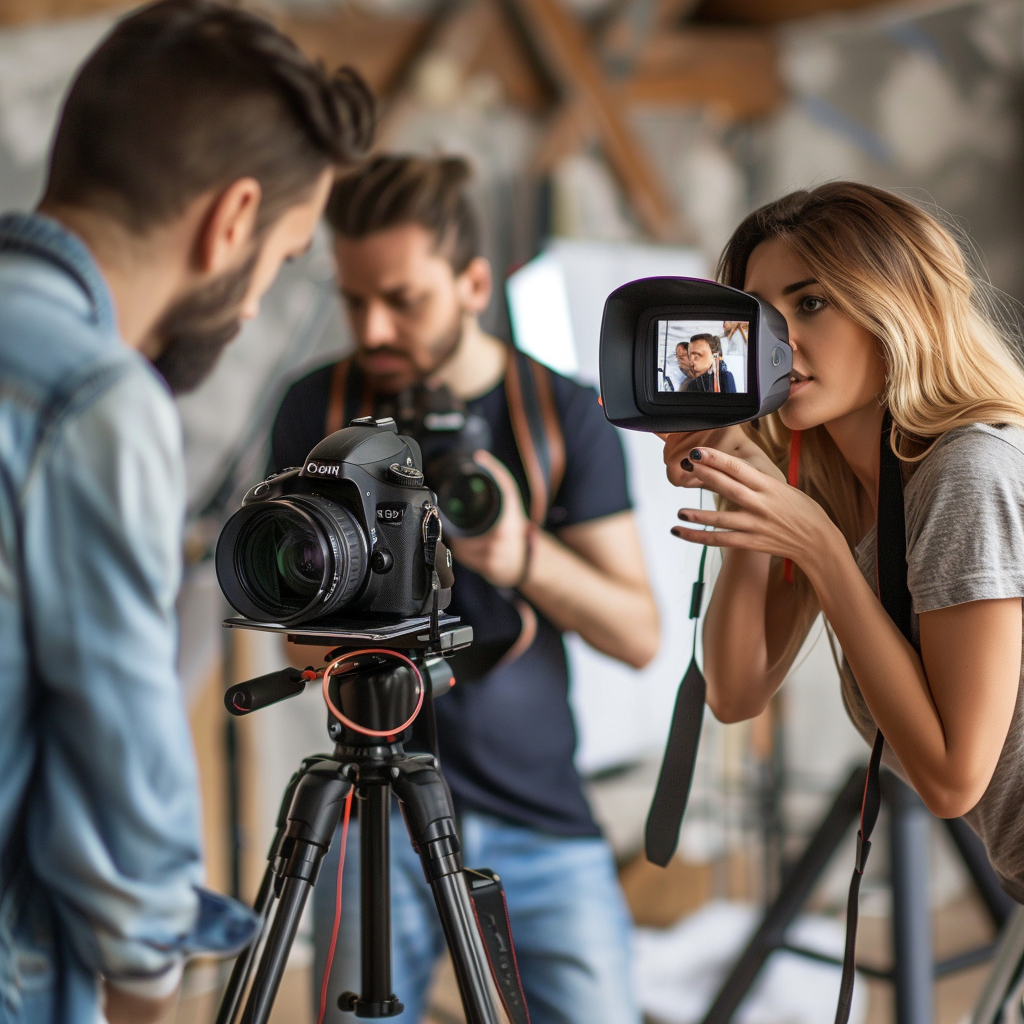
Talking is crucial. Chat with your team and customers before you take photos to make sure you’re all thinking the same thing. Talk about the plan, clothes, and hairstyles—everything really. This stops confusion and lets everyone know what they should be doing. Good talking can make a photo session rock.
Get Lighting Right
Lighting’s super important for pictures. Natural light is soft and warm early in the morning or late in the day, which looks nice on most things. Inside, use things like softboxes to copy daylight and not get ugly shadows. Watch how light hits folks’ faces and change it if needed. Try different angles and lights to get depth. If the light’s too bright, use something to soften it.
Talk Well With Models
Talking well helps models chill out, giving you better pictures. Talk about your ideas with them before starting. Show examples if you’ve got any, so you agree on the look. While taking photos, tell them clearly what to do but let them do their own thing a bit. Say nice things to make them feel good. Ask questions that get them to show real smiles and looks. Comfy models mean real-looking photos.
Be Creative and Care About Details
Being creative sets your photos apart. Don’t be scared to try new stuff with props and places. Small details matter too—like stray hair or crumpled clothes can mess up a picture. Lead eyes to the main part of the photo with lines. Think about where you stand; moving a bit can really help. Colors need to work together too; they shouldn’t clash.
| Main Stuff | Hints |
|---|---|
| Lighting Smarts | Natural light is best in golden hours; think about softboxes inside |
| Goid Talk With Models | Have a chat before; give clear guidance; make sure models are comfy |
| Creativity and Detail Focus | Try out props and spots; don’t ignore little details |
Sticking to these main parts—and tossing in your own style—make any photo shoot good. Don’t look down on powerful lighting, solid chatting, and paying attention to tiny bits. That’s what pushes good photos to great!
When you’re planning where to take photos, the place can really make or break them. The right location is almost more important than anything else, so pick smartly.
Match the Location to the Theme
Start by thinking about what kind of feel you want. Romantic? Rough and outdoorsy? Maybe city-like? The spot should fit your theme and maybe even make it better. So, a park is good for lovey-dovey shots, while cool wall art might suit fashion pics.
Check Out the Light First
Now let’s focus on light—it’s vital! Daylight is usually top notch, but tricksy sometimes. Go see the place at the time you want to click your camera to see what the light’s like. Watch for bad shadows or really bright bits that could ruin a photo. Golden hour’s got that soft glow that’s perfect.
Think About Getting There and Permissions
Also, consider if the place is easy to reach for all, including anyone who has trouble moving around. And if you’re in public, might need a permit? Check the rules; you don’t want to be thrown out cause you didn’t ask first.
| Aspect | Main Points |
|---|---|
| Theme Fit | Pick a place that matches your photo shoot’s idea. |
| Good Light | Look at natural light beforehand; aim for golden hour times. |
| Getting There & Permits | Make sure it’s easy to get to and check if permits are a ‘must’. |
To sum up, picking the right spot means more than just getting somewhere pretty. Think hard about your theme, lighting knowledge, and some practical stuff like getting there and having the right permissions. Plan it out properly and you’re setting up for a successful set of snaps. Don’t settle—make each bit work for you!
Choosing Backdrops and Props
If you’re taking studio pics, you’ve gotta plan well. Get different backdrops that go with your theme. Plain ones are great for simple stuff while patterns can add interest. Once I took old-fashioned theme shots against wallpaper that looked old-timey – everyone loved it! Props are just as key. They should match but not take over—think “less is more”. Picking right makes better moods than putting in loads of stuff.
Messing With Lighting Setups
Lighting is huge for photography; try out setups to find what looks best. Daylight rocks but sometimes you need tools like softboxes to tame tough light. Got this from experience—bad shadows are no fun for portraits! Sometimes putting light behind something can look amazing, so play around with it all.
Making it Snug for Folks
Real talk: twitchy people don’t look great in photos. Make the space friendly by playing mellow tunes, offering a drink or snack, and having a chat beforehand.
In one fun shoot I did, talking first made our model way more chilled out and we snapped some top-notch pics because she seemed so genuine and comfy.
Here’s what to remember:
- Pick fitting backdrops and props
- Tinker with various light setups
- Create a warm, inviting space
All the small details stack up, meaning if you prep thoughtfully, your photo shoot will breeze by.
There’s nothing like natural light for photographs – it’s flexible and real-feeling.
Golden Hour Glow
About that soft light – golden hour is when magic happens right after sunrise or just before sun goes down The light’s gentle then with a warm tint that makes everything look nice.By L.O.L., i taken many pics in this time and o boy does it spice things up – shadows are softer, depth gets better, overall pictures jsut feels welcoming.
Bouncy Boards for Shadows
If shadows are harsh, bring in reflectors.They throw light back so dark spots lighten up.A piece of white card can even do the trick.Nothing fancy needed!
Cleaning Up Camera Settings
Your camera settings have got to be solid with natural light.Check the histogram—that’s the graph showing shades from dark to light.It saved my bacon bunches of times.Adjusting ISO, shutter speed, and aperture right is key for nailing that exposure sweet spot.
Sometimes natural light won’t cut it.You need fake light for full control over moods in photos.Flicking on some lamp isn’t enough though; it takes craftiness to get stunning results.
Picking Smart Artificial Lights
What Camera Settings Should You Use?
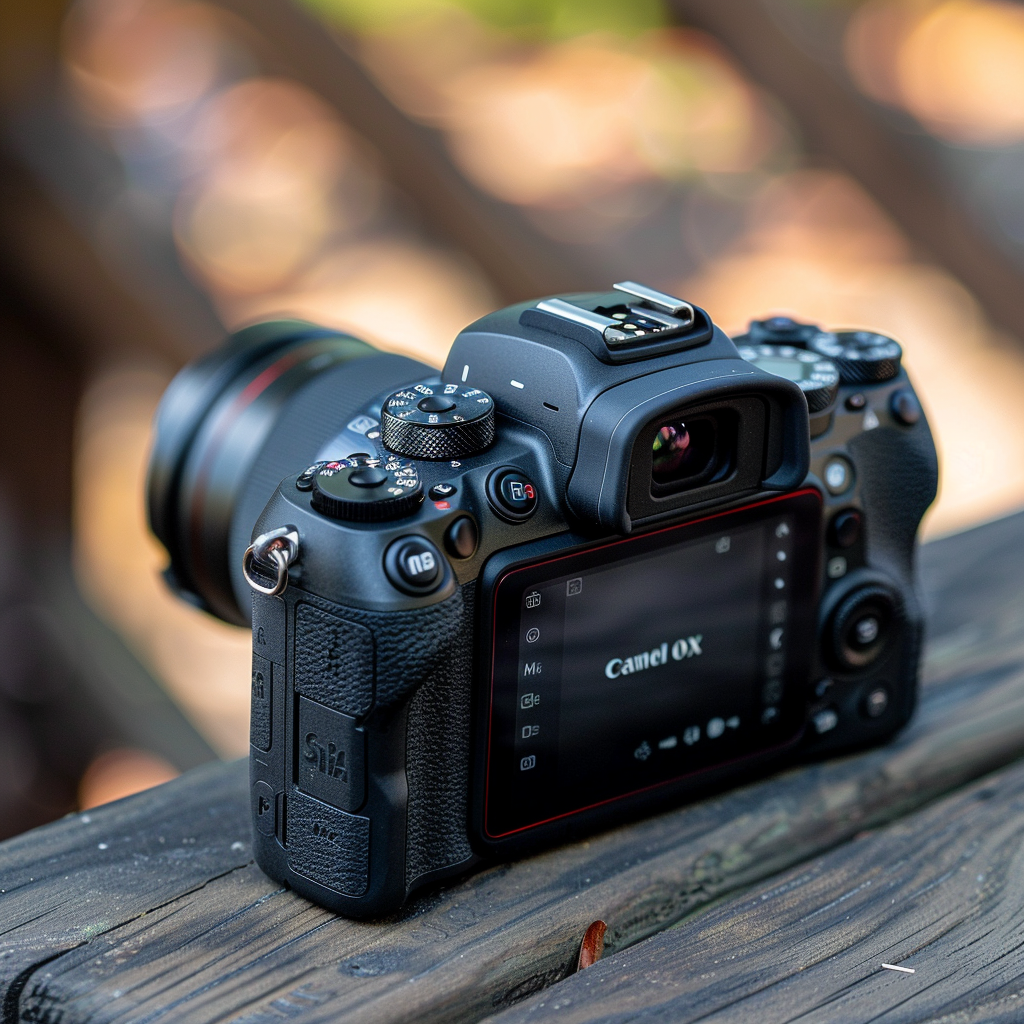
Aperture, Shutter Speed, and ISO
To be good at photography, you need to know your way around the aperture, shutter speed, and ISO. The aperture decides how much light gets in – a big aperture (a small f-number) blurs the background but keeps the main thing you’re snapping sharp. Shutter speed is all about movement. A quick shutter freezes action; a slow one makes a cool blur. ISO’s all about how sensitive your camera is to light. Turn it up in the dark, but watch out – too much makes your pics grainy.
Getting Colors Right with White Balance
For colors that don’t look weird, you’ve gotta set the white balance right. Sure, cameras try to guess what’s best, but they can mess up. You might need to change it to ‘daylight’, ‘cloudy’ – whatever fits where you are. That way your photos won’t look too orange or blue.
Try Manual Mode
Using manual mode puts you in the driver’s seat – scary at first, but totally worth it. You get to twist all the dials for aperture, shutter speed, and ISO yourself. This way, no more guessing from your camera – you get the picture looking just how you want, every single time.
Learned this the tough way – a tripod can save or sink your photo session. Those tiny shakes when you hold the camera? They add up and can wreck a great photo. A good tripod keeps things still for a nice, sharp image.
Keeping Your Camera Still
Shaky hands in dim light are a nightmare for pictures. Done this a ton – had to redo shots ’cause I thought my hands were steady enough. Nope. You need a tripod for those sharp shots. Editing’s easier later too ’cause there’s no blur to fix.
Tripods and Long Exposures
Ever tried a long exposure shot without something to rest your camera on? It’s hard to not wiggle around. But for those cool smooth-water effects, you need absolute stillness. Tripods let you nail those slick pro shots.
Keeping Shots Consistent
A tripod’s aslo awesome for keeping your shots lined up the same. When you’re moving the camera by hand, it’s easy to accidentally change the angle. A tripod stops that cold, making sure every picture fits together perfectly.
Catching Spontaneous Moments
For spontaneous pictures, watch what’s happening and guess what’ll happen next. Like kids being cute – have your camera ready for their next funny move or giggle. Wait for that moment of laughter or that twinkle in an eye.
Relaxed Faces Are Best
If you want real smiles and true feelings, don’t make folks say “cheese!” Instead, talk to them normally – ask stuff, crack jokes, chill together. When they stop thinking about the camera, that’s when you snap those special unplanned photos. A simple convorsation starters can sometimes bring out authenic joy.
Telling Stories with Photos
Think of yourself like a storyteller using pictures. Show off little details that bring a story to life – maybe an old hand holding a little one or sunlight coming through a window. Let things happen and just photograph them as they are – no staging necessary.
When you’re doing a photo shoot, being able to direct people is key. You could have the prettiest background and sunlight perfect but if your models are stiff or unsure, it’ll show. So be bold in telling them exactly what to do.
Giving Clear Directions
Remember: take charge and hand out clear instructions on posing and where to look. Directing couples? Tell them how cosy to stand and where to put their heads and hands. If you’re vague they might get confused and waste time.
Natural Smiles Are Everything
No one likes fake smiles. Chat with your subjects to help them relax. The most natural smiles come when they’re talking about things they love or remembering fun times. I fotographed a shy girl once started chatting about her fav TV shows, and bam! She was grinning genuinely – best pics of the day!
Making Small Tweaks
Everybody has angles that look better on them than others, so you’ve gotta find these and use ’em! Someone looks squinty when they smile big? Ask for a slight grin instead. Watch their posture, see where their hands go and little changes like turning their head slightly can jazz up a plain photo into somthing fab.
Framing people the right way ain’t just standing them there and clicking away; it’s an art form all by itself.
Paying Attention to Body Language
Body language says a lot it shows if someone is confident, chill or feeling awkward
Being Dynamic with Poses
You’ll want your pics to pop? Tell people to move shake it up a bit walk around wave their arms props can really help make images feel real.
Personalizing Poses
Different poses suit different people figure out what works for whos in front of your camera With carefull attention you will notice what makes each person shine this is crucial.
Tips Table
| Pose | Description |
|---|---|
| The S-Curve | Adds elegance wth subtle body curves creating an ‘S’ shape. |
| The Lean | Laid-back pose achieved by leaning against something chill-like. |
| Movement Shots | Energetic pics with walking or spinning Try these for lively snaps. |
A photoshoot success secret? Keeping your model comfortable after many shoots I can say this is huge When folks are relaxed everything works better.
Making Friends Comes First
You’ve got to bond with people Talk about light stuff before starting Get them comfy by showing interest.
Giving Tips as You Go
No one wants to be clueless so keep telling them they’re doing well or how they could tweak a pose Sounds basic? But these tips give confidence I did this with one nervous model and she turned pro status in minutes!
Setting the Right Vibe
Create a chill atmosphere Use music lights whatever helps make things comfy Keep stress off if youre indoors offer water and don’t let it get hot or cold This helps BIG time.
Getting Good Group Shots
With groups avoid stiff military lines! Vary heights mix up how they stand Put some sitting others standing Props or different background levels add depth Triangle patterns are great guiding viewers’ eyes in the pic.
Posing Each Person Well Within Fairness
In group pics, everyone should look good. Nobody should be awkward. Mix it up—have some lean on each other or do stuff with their hands. Have ’em interact softly and connect just enough so they don’t seem glued together.
Maintaining Group Mood
A happy group equals good shots. Keep things easy and enjoyable. Have ’em all laughing. Maybe play tunes. Anything that keeps the energy up while letting personalities out. No one left out or shy; if they are, the picture dies no matter how well put together.
Group Photo DOs
| DOs |
|---|
| Triangles rule |
| Vary heights & places |
| Quiet contact |
| Stay breezy |
Remember, group shots are all about finding equilibrium and ensuring no one feels out of place or uncomfortable. Focus on expressions so when you see them, they make you feel something. It’s not about techie skills; it’s about feelings. A smartphone can catch emotion. You don’t need pricey gear.
Focusing on faces—it’s fascinating how something as simple as a grin or a raised brow can transform an image. Capturing the whole spirit of an event is possible by waiting for those unforced, priceless seconds. Don’t force scenes.
Tips Recap:
- Catch Earnest Emotion: Facial ticks bring layers. Narrative told via stance.
- Form Ties with Your People: They require ease to share honest feelings.
So that’s straight-up simple yet truly useful pointers. Stick with them, and your pics will dearly pop.
How Do You Take Action Shots?
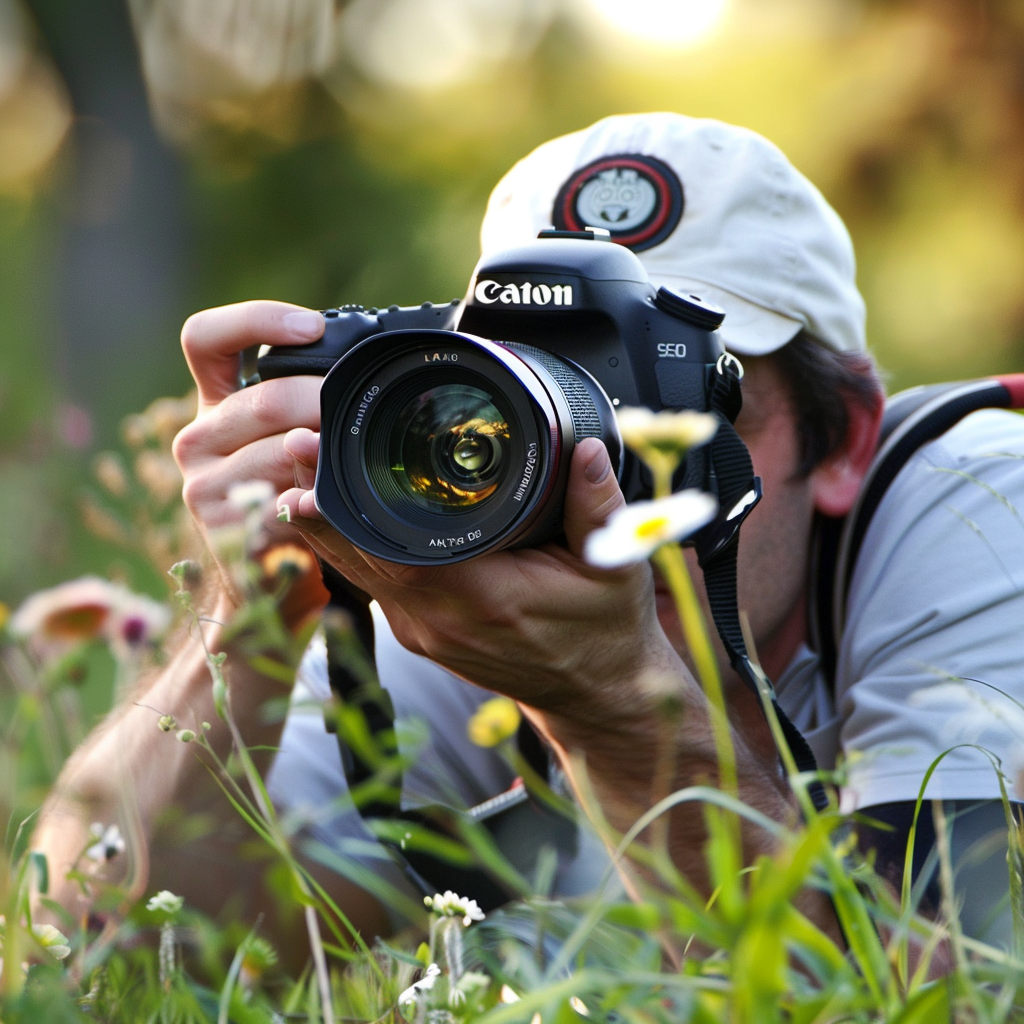
Freezing Motion with Fast Shutter Speed
To catch action shots, you’ll need to set your camera to a high shutter speed. This stops the movement in the photo, whether it’s someone jumping or a soccer player booting the ball. To minimize blur, use a shutter speed of at least 1/500th of a second or even quicker. Remember that higher shutter speeds require good light. If you’re taking pictures outside, great; but indoors, you might have to add some lights.
Anticipating Movement for Dynamic Shots
You must predict what’s going to happen next for successful action shots. This isn’t just about snapping photos quickly; understand what your subject is likely to do next. This might involve familiarizing yourself with an athlete’s moves or knowing a dance routine’s rhythm. I recall photographing a local soccer game—figuring out the timing for potential goals was crucial. The shots I got at those moments turned out to be the highlights of my collection.
Experimenting with Different Angles
Tweaking your perspective can make your action shots pop. Don’t get stuck on one view; mix it up by shooting from down low or up high. Changing angles can show off the motion and vibe in exciting ways. Take it from me; I once lay on the ground to snap pictures of runners’ feet during a marathon. It gave me some striking photos that really stood out.
Why Should You Use Props?
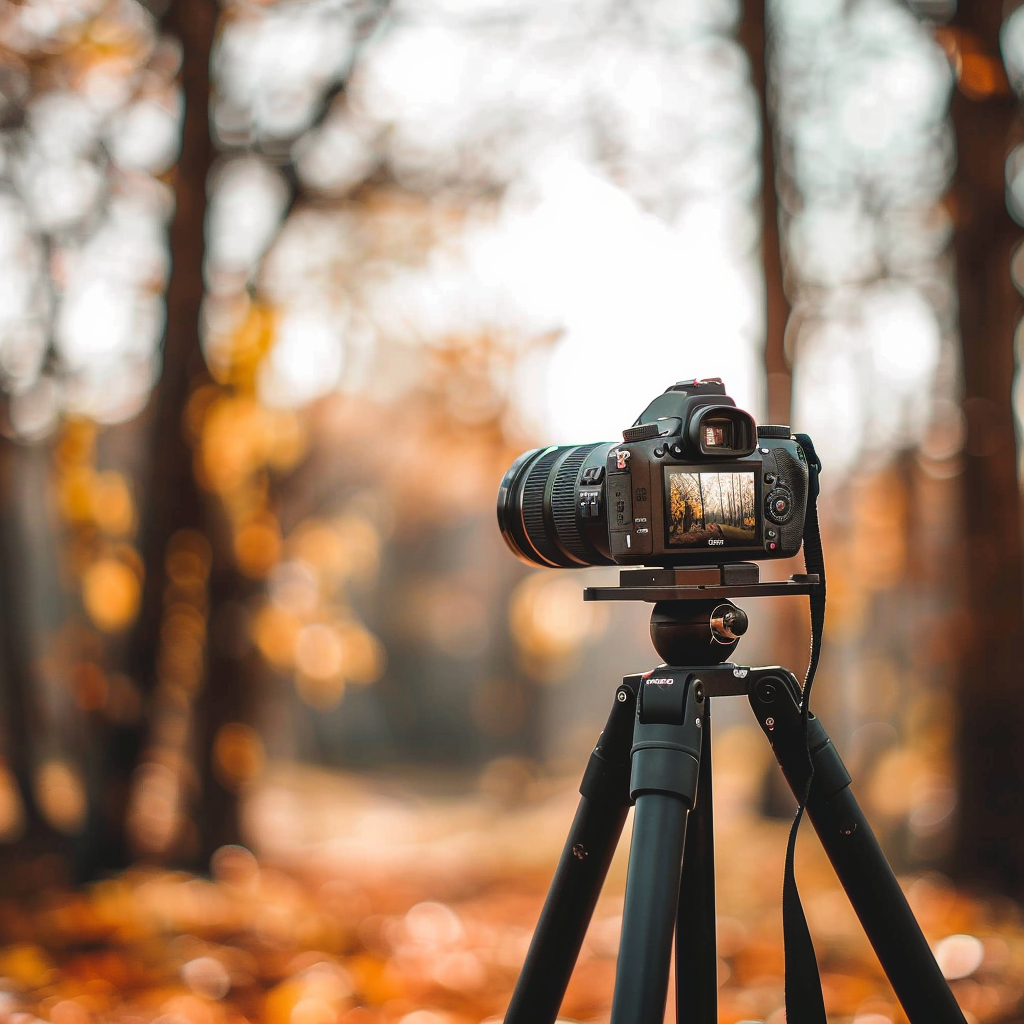
Props Improve Your Photos
Adding props can turn a basic shot into something that really stands out. When added right, props can help illustrate a narrative. If your photo session has a vintage feel, using old suitcases and classic novels can help set the scene. But be careful; make sure the props don’t overshadow the main focus of your shot.
Make Your Photos Pop
Props add life to your photos by adding new dimensions that catch the eye. A plain portrait can seem dull, but add a chair or some flowers, and it’s a whole new ballgame. Just be mindful not to overdo it – too many props can clutter your picture and distract from what’s important.
Pick the Right Props
The key is picking props that fit the theme of your shoot. You wouldn’t want to mix up themes, like using a summery beach ball in a winter photo. Be strategic with your prop choices. For example, wands and crowns are perfect for a fairy tale setting, while tech gadgets fit a modern vibe.
Consider these tips:
- Choose coherent colors
- Keep props tidy
- Vary the size of the items you use
With these pointers, you’ll have props that not only blend well but also enrich your images. Take it from an expert – the right prop can make all the difference!
Nature as the Perfect Backdrop
When shooting outside, nature can serve as an excellent backdrop. From forests to beaches, the scenery provided by nature can save you the trouble and expense of artificial backdrops.
Adapt to Sunlight Changes
The sun moves throughout the day and so should you. Outdoor lighting can vary, but it also presents great opportunities. The golden light in the early morning and late afternoon is perfect for portraits, while midday sun requires finding shade to prevent harsh shadows.
Work With the Weather
You can capture amazing shots by working with the unpredictable outdoors. Let the wind play with hair or drizzle add mood to your image. These elements can amplify your photo if used correctly.
Prep for Bad Weather
Weather is always a gamble. When sunny days turn gray, have backup locations ready and let clients know about these plans just in case.
Creative Shots in Bad Weather
Bad weather might actually improve your shots, adding unique touches. Cloudy skies offer natural diffusers for soft portraits and rainy days give you reflections and atmosphere. Equip your subjects with umbrellas or raincoats for lively, dramatic pictures.
Keep Your Gear Safe
Protecting your expensive gear from the weather is essential. Use weather-proof bags, lens hoods, and clean cloths. In a pinch, plastic covers and zip-lock bags will keep your equipment dry.
Indoor Lighting Mastery
In a studio, understanding lighting setups is crucial for creating top-notch images. Learn how to use different lights effectively – key lights brighten, fill lights reduce shadows, and backlighting adds depth. Also remember modifiers like softboxes; they can soften intense light.
Create a Consistent Environment
Indoor shoots allow you to control everything from temperature to background noise, making for more predictable results than outdoor shoots.
Use Space Efficiently
If space is limited, use it creatively. Think about using vertical space and mirrors to make rooms appear larger. Opt for furniture and gear that won’t take up too much room.
This table breaks down some basics:
| Light Source | Purpose | Tips |
|---|---|---|
| Key Light | Main illumination | Direct at the face |
| Fill Light | Softens shadows | Set opposite of key light |
| Backlight | Adds depth | Place behind the subject |
Getting Good Takes Skill
You need good planning for indoor sessions, just like for outdoor ones. Whether through smart lighting use, setting consistent conditions, or creative use of small spaces, details matter for quality outcomes. It takes practice to develop these skills.
The Importance of Color Theory
Color theory helps photographers understand how colors work together to affect viewers. It involves the color wheel, showing primary (red, blue, yellow), secondary (green, orange, purple), and tertiary colors (combinations of primary and secondary). Understanding this guides photographers in using color to get certain reactions from their audience.
Finding Good Color Combos
Different color combinations create different vibes:
- Complementary Colors: Opposite on the wheel for high contrast.(e.g., red & green)
- Analogous Colors: Side by side on wheel for harmony (e.g., blue & teal)
- Triadic Colors: Spaced evenly around wheel for balance (e.g., red & blue)
- Monochromatic Colors: Varying shades of one color for elegance.
Evoke Feelings with Color
Colors spark emotions. Red and orange exude warmth and passion; blues and greens evoke calmness and tranquility. Pick your palette based on the feelings you aim to stir within your viewers.
Balanced Colors Work Best
A balanced color palette makes your photos visually pleasing. Limit yourself to 2-4 colors, use contrasting shades wisely, decide on the dominant color in your frame, and include neutrals for restful spots in your composition.
Making an Impact
A commanding color strategy combined with knowledge of emotional triggers and balance elevates your photography game to new heights – that’s a fact!
Show Off Contrast and Texture
In black and white shots, textures shine through more than in color prints. Look for strong contrasts between light and dark to draw in viewers’ eyes. Spotting unique textures in walls or other backgrounds helps engaged viewers’ curiosity.
Giving Shape Attention
In monochrome photography, shapes become stars since there’s no color competition. Repeating forms like arches can create impactful visuals Worth scouting out strong shapes when framing shots!
No Lazy Conversions
Ditch quick grayscale switches; instead tweak contrast settings to highlight specific details in converting colored pics to black and white.
LAST PARAGRAPH MISSING
How Do You Perform Portrait Photography?
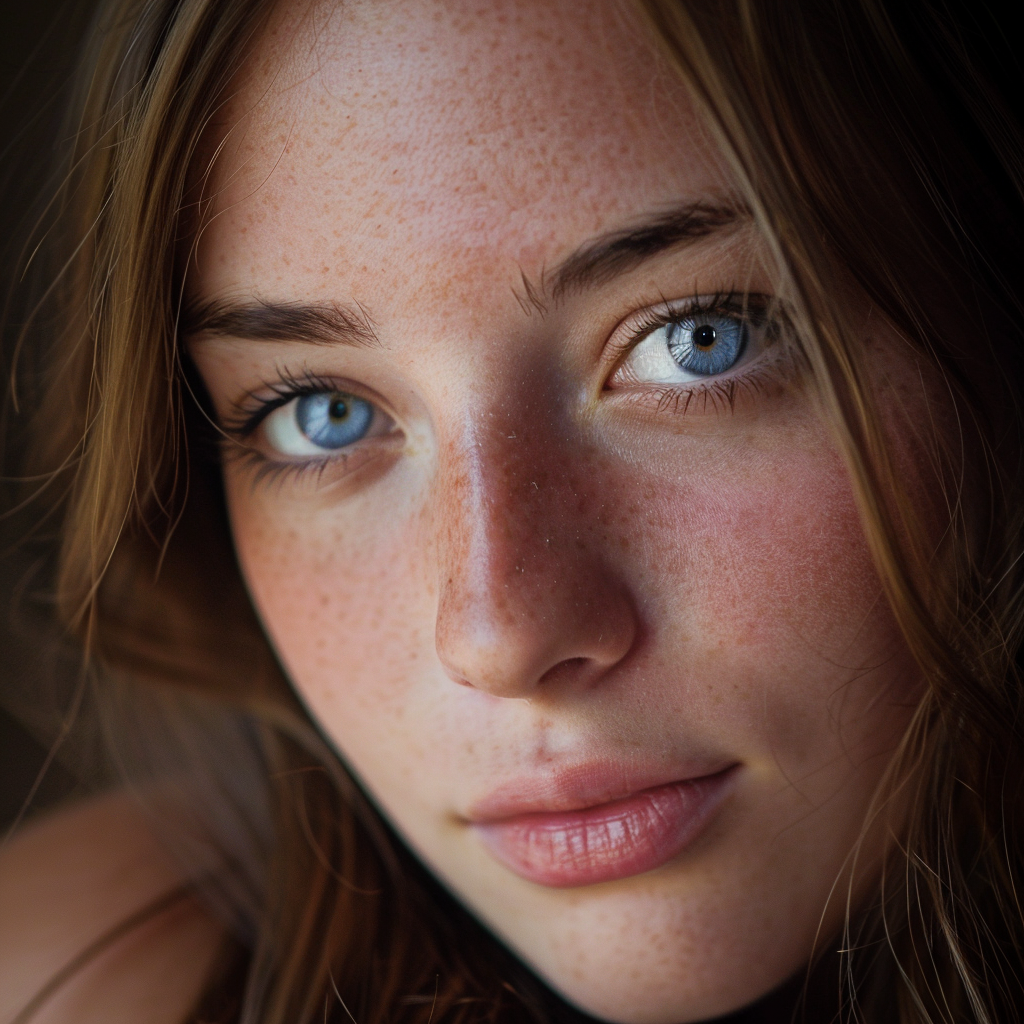
Taking pictures of people is an art form. When you take someone’s picture, you’re not just capturing how they look. You’re trying to show their emotions, how they connect with others, and what they’re like. Each photo should be like a window into who that person is.
Capturing the essence of the subject
Remember, the person you’re photographing is one-of-a-kind. Chat with them a bit to get a feel for who they are. Their feelings and how they come across should look real and unforced. Choose light and backdrops that fit their personality as well as their appearance.
Focusing on facial expressions and emotions
The look on someone’s face is everything. Aim for a smile or a serious expression that looks true-to-life. If smiles look fake, it can spoil an otherwise good photo. Keep the conversation going until you capture their sincere emotions – genuine grins make all the difference.
Creating a connection with the subject
You’ve got to get along well with the person you’re taking photos of. If they feel comfortable around you, they’ll look better in the picture. Make them laugh or share some stories to help them loosen up. Photographing different ages means adapting – what works for one age may not work for another.
Adapting Poses and Interactions for Different Ages
For kids, keep things active and fun. Maybe let them play or jump around. Teens might like poses that make them seem trendy, so ask for their posing ideas. Adults generally don’t mind staged shots but still, make sure they are comfy. Older people might like dignified shots that suit their true selves without feeling odd.
Creating a Comfortable Environment for Children
Kids pick up on their surroundings so make sure they feel secure and content. Give them space to move and bring things they love, like toys. Soft natural light can be less scary than bright studio lights for them.
Highlighting Character and Wisdom in Older Subjects
Older adults have faces marked by life. Show off those signs of experience – they have stories to tell. Use light in a way that is kind to their features while honoring their lived-in look. Black-and-white photos can be really good for showing off the detail in their faces. Chat about their past and things they love; it helps relax them and adds substance to your pictures.
Reflecting the company’s brand and values
In corporate shoots, you want the photos to match what the business stands for. Think about color themes, styles of dress, and backgrounds that go well with the company vibe. A high-tech company? Maybe do something modern that shows they’re forward-thinking.
Creating professional headshots and group photos
Professional single and group shots are a must-have in business shoots. Solo shots should be sharp and look pro. Dress people right—avoid busy patterns or too casual clothes. For group shots, position folks in a relaxed but tidy way. Good lighting is key to avoid weird shadows or bright spots.
Emphasizing teamwork and corporate culture
A great business shoot also captures how well the team works together and the office vibe. Take spontaneous photos of people working together using props that fit what they do. Snapping fun times or team activities can show off a positive work environment.
Additional tips
To get these right, here’s more advice:
- Pre-Planning: Talk to people who need to use the photos ahead of time.
- Hire a Professional Photographer: It might seem okay to snap photos yourself, but pros know best.
- Choose the Right Time: Shoot when the light is good if you can. Mornings and late afternoons often work well.
- Background Check: Don’t let busy backgrounds distract from the main focus.
- Post-Production: Edit with a light touch so photos stay real-looking.
By keeping these points in mind, your corporate photo session will be smooth sailing and reflect your business’s style and atmosphere accurately.
Documenting everyday moments authentically
The real magic in lifestyle shoots is snapping real-life stuff as it happens. Don’t try to set up every shot—just let folks be themselves. Kids playing, someone enjoying coffee by a window, or partners laughing together during breakfast—these genuine moments hit home with everyone Use daylight as much as possible and don’t over-edit to keep it all looking true.
Showcasing a specific lifestyle or activity
If your goal is to portray a certain way of living or hobby, plan carefully. Choose your props and locations wisely to tell your story properly How about someone practicing yoga outside? You’d find a calm place and pick out the right clothes to fit the scene to create meaningful images.
Creating aspirational and relatable images
You aim for images that inspire yet feel reachable Striking this balance isn’t easy but quite possible Show folks at their best yet in situations anyone could find themselves in. Think chic parents at play or gourmet cooking at home Pay attention to little things, like props that make a setup inviting and believable.
Key Points for Successful Lifestyle Photo Shoots:
- Use natural light for authenticity.
- Edit minimally to maintain genuine moments.
- Select settings and attire that fit your theme neatly.
- Include details that boost reality and depth in your shots.
| Aspect | Tip |
|---|---|
| Lighting | Natural light, Avoid over-editing |
| Setting | Tell your story right |
| Outfits & Props | Fits with your intended lifestyle/activity |
| Editing | Less is more |
Final Thoughts:
Lifestyle photography’s really about making normal look fantastic And sometimes just letting things happen naturally gets you the best shots!
Capturing Key Moments and Emotions
In event photography, getting those critical times and feelings right is super important. These types of pictures tell the event’s tale and stir up memories every time someone sees them Aim for candid shots – those natural unplanned ones that truly show heartfelt emotions People prefer seeing the real deal not setups Look for real interactions tears of joy laughter any big emotion Happen to be there when those big moments happen ready to take the shot.
Documenting the Atmosphere and Details
Taking photos at an event includes catching the whole vibe including details It creates a complete picture of the event Capture images of where it’s happening, stuff used to decorate even small things like how tables are set Though they may seem minor these things fill out an album Shoot wide shots to get the size mood of an event Close-ups bring attention to effort put into tiny aspects.
Adapting to Fast-Paced and Unpredictable Situations
Events are always moving fast Things change constant As a photographer be ready for anything Adjust camera settings quickly to match different light or action Sometimes you’ll have perfect lighting sometimes not Things might go as planned or veer off Be ready for whatever comes up quick changes surprise guests any spontaneous moment you wouldn’t want miss.
How Can You Capture Candid Moments?
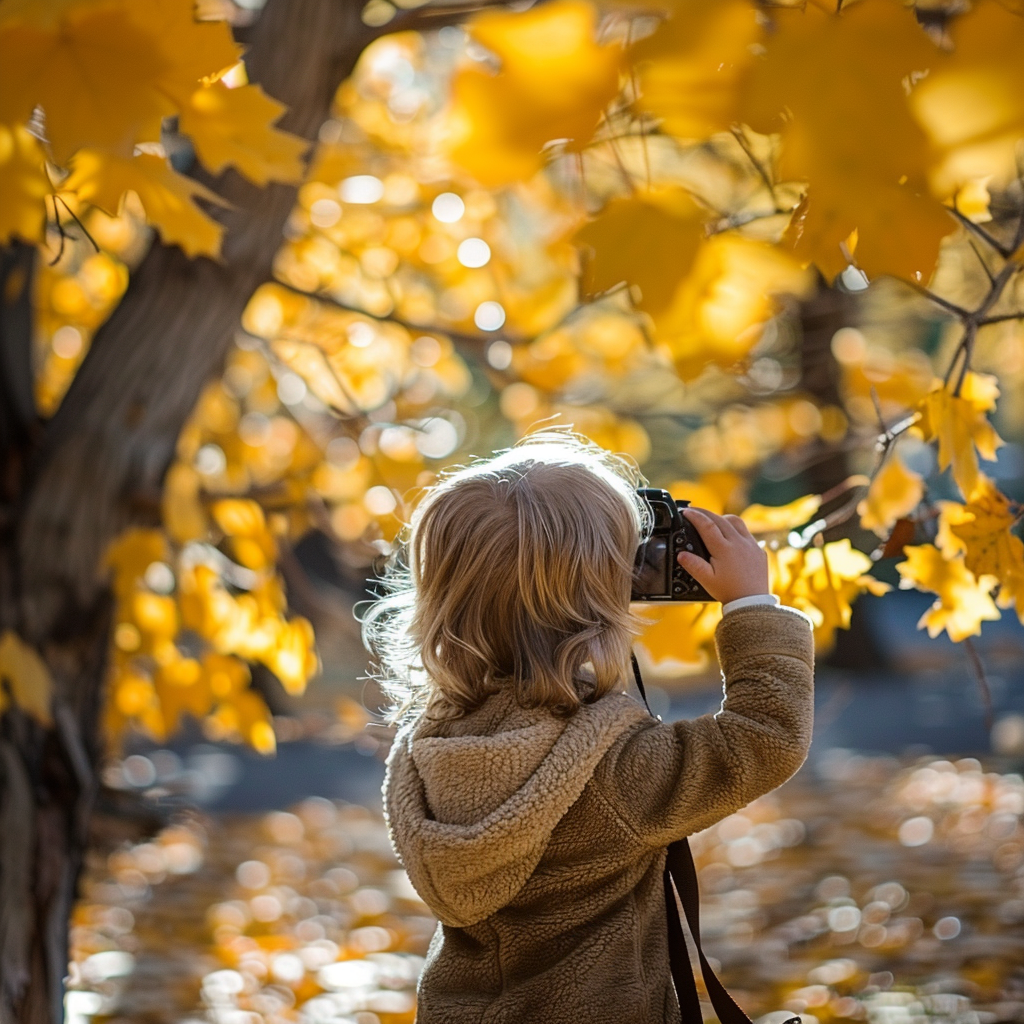
Photos filled with candid moments seem real and touching. It takes skill to take these shots. You need to be unnoticed, react quickly, and have a knack for telling a story.
Blending into the Background to Capture Genuine Moments
Become invisible if you’re after spontaneous photos. When you blend in, people act naturally, and that’s when you get great shots. Try not to draw attention and move quietly.
Anticipating and Reacting Quickly to Candid Opportunities
You must be fast to catch those unplanned shots. Watch people closely, guess what they’ll do next, and be ready to click at just the right time. Set your camera for speedy shooting.
Creating a Storytelling Narrative through Candid Shots
Your pictures should reveal stories – from family gatherings to weddings. Search for images that connect to form a full story, displaying emotions and details that enrich your collection.
How Can You Highlighting Product Features and Details?
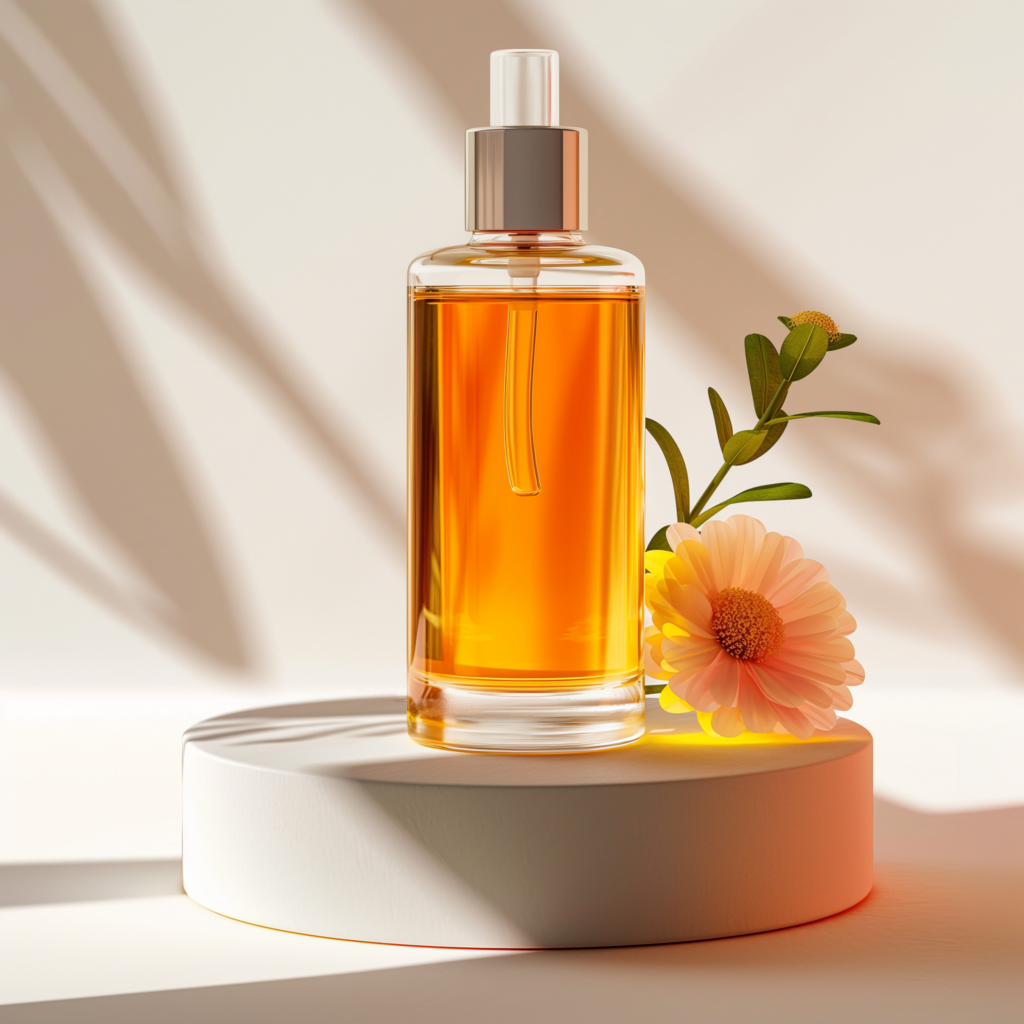
Taking product photos that show off the best features isn’t simple. Start with great lighting. Ensure the item is spotless; dust will show up in pictures. Macro lenses can help capture small details. Shoot from various angles for a complete view.
Creating Visually Appealing Product Images
A good-looking photo sells the product. Keep backgrounds consistent and neutral. Add props only if they add value and make sure to balance your composition mixing broad and close-up shots. Use a tripod for crisp images.
Emphasizing Product Benefits and Uses
Photos should illustrate how the product enhances life. Depict it in use – like kitchenware in cooking scenes. Annotated images with highlights help buyers see why they should purchase.
Why Should You Develop A Unique And Creative Concept
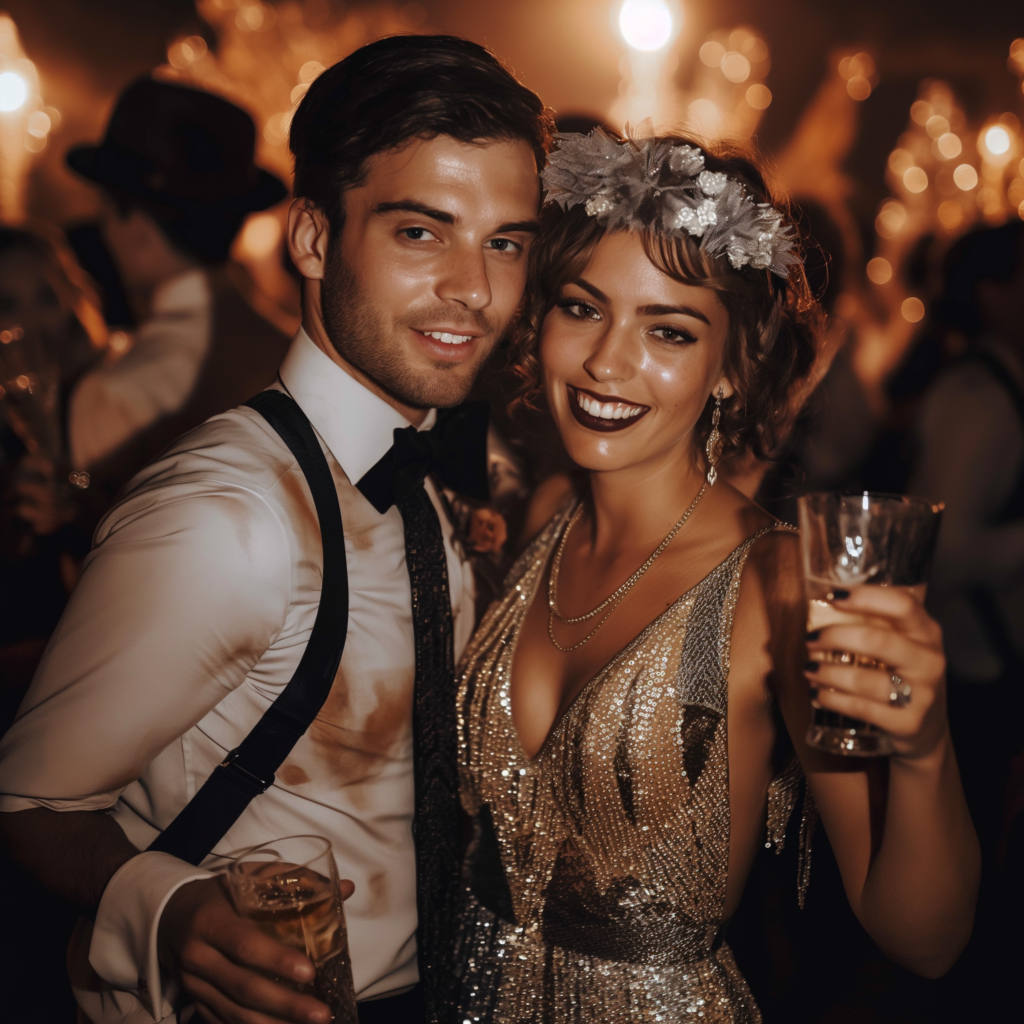
Photos need to stand out with something special. Create a concept that captures emotion or tells a tale. Get ideas from various sources – I’m fond of classic literature themes, like my shoot reminiscent of “The Great Gatsby.”
Using symbolism and metaphors in images
Add meaning with symbols or metaphors – like clocks or wilted flowers – to leave a lasting impact. In one shoot, broken mirrors expressed fragmented selves powerfully.
Pushing the boundaries of traditional photography
Dare to be different! Experiment with odd techniques or edits, mix art forms like adding paint, or use elements like smoke bombs as I did for a mysterious effect.
Focusing on Capturing the Subject’s Personality
In headshots, personality is key. Create a friendly setting, chat with your subject, and let their unique character lead.
Emphasizing Facial Features and Expressions
Capture the essentials of their face, especially the eyes. Adjust angles and use flattering lighting to minimize imperfections while encouraging honest expressions.
How Do You Create Professional and Engaging Headshots?
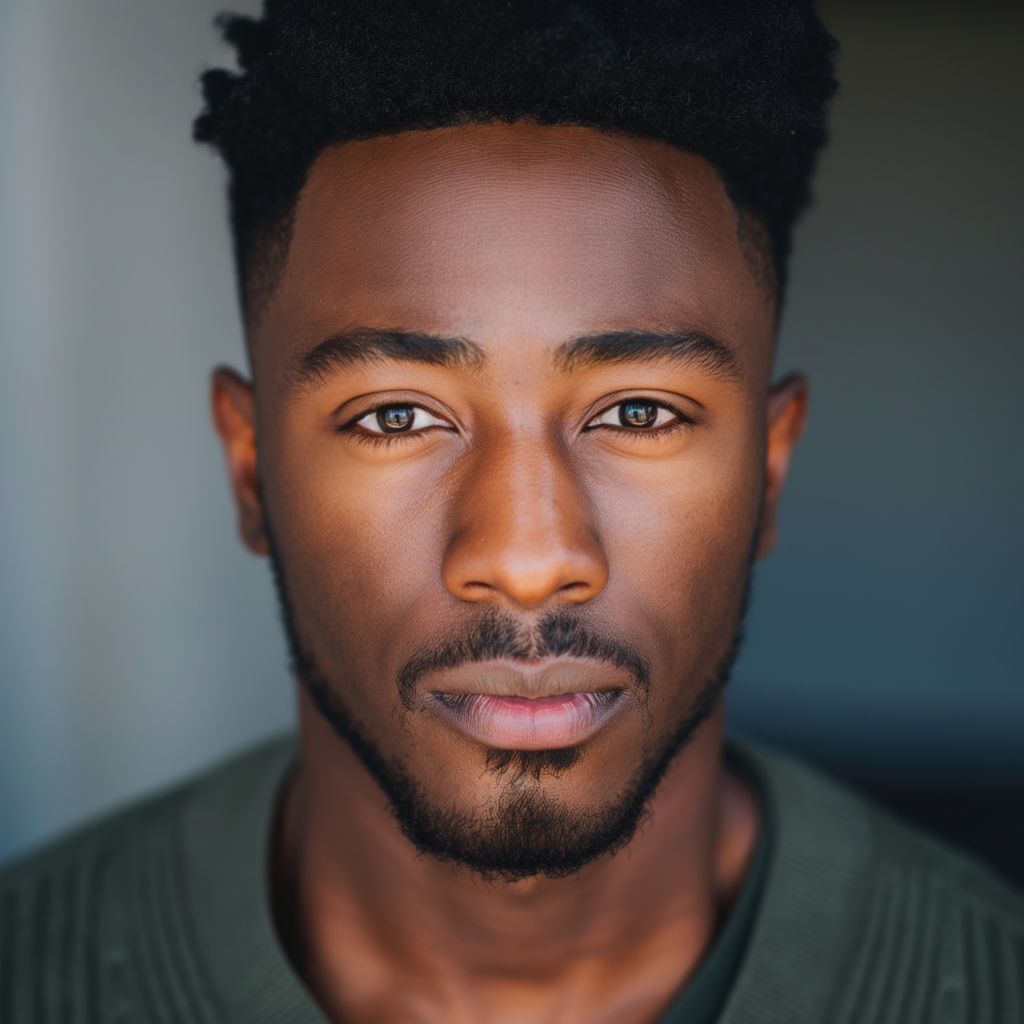
Attention to detail is crucial for professional headshots. Use plain backgrounds, appropriate clothing, and flattering lighting – natural if possible, but supplemented by studio lights as needed.
Follow these steps for headshot mastery.
When taking photos, expressing the person’s essence matters most. Aim for more than just looks; strive for images speaking volumes about who they are.
Engaging with the subject to bring out their personality
Connect deeply with your subjects. A meaningful conversation might unveil their true spirit for the camera.
Encouraging natural expressions and emotions
Natural feelings make the best photos. Encourage subjects to share genuine emotions beyond staged smiles for memorable shots.
Creating a connection to capture authentic moments
Create a bond with your subjects; humor or empathy can transform a photo into something extraordinary – a true reflection of life.
How To Tell A Visual Story Through Editorial Images?
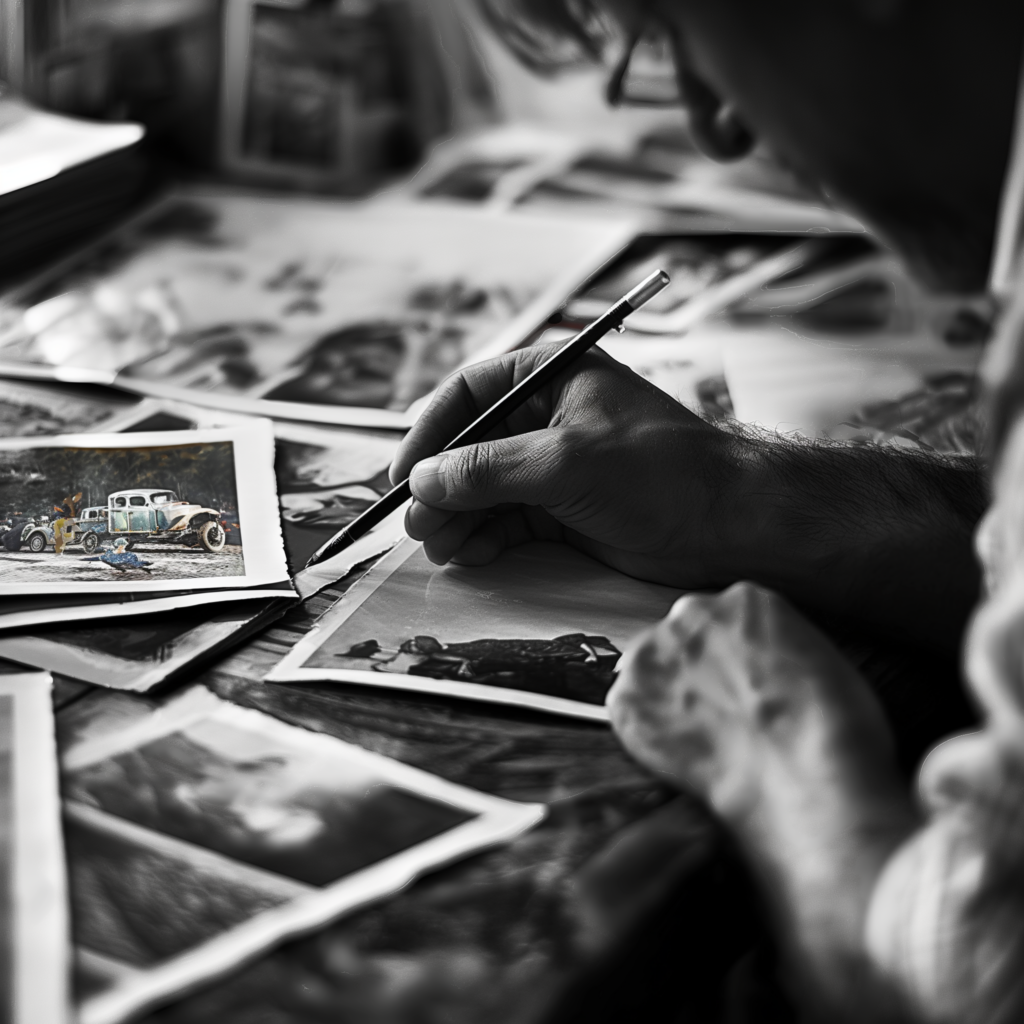
To tell stories with pictures, think about the narrative you want – from emotions to settings. Sometimes one strong image can say a lot.
Collaborating with stylists and designers
Collaboration with stylists enhances photos – discuss your vision thoroughly beforehand for best results.
Creating compelling and narrative-driven images
Create gripping shots by merging light, composition, and content well together. Innovative shots often result from breaking norms.
Why Is Exploring Artistic Concepts and Themes Important?
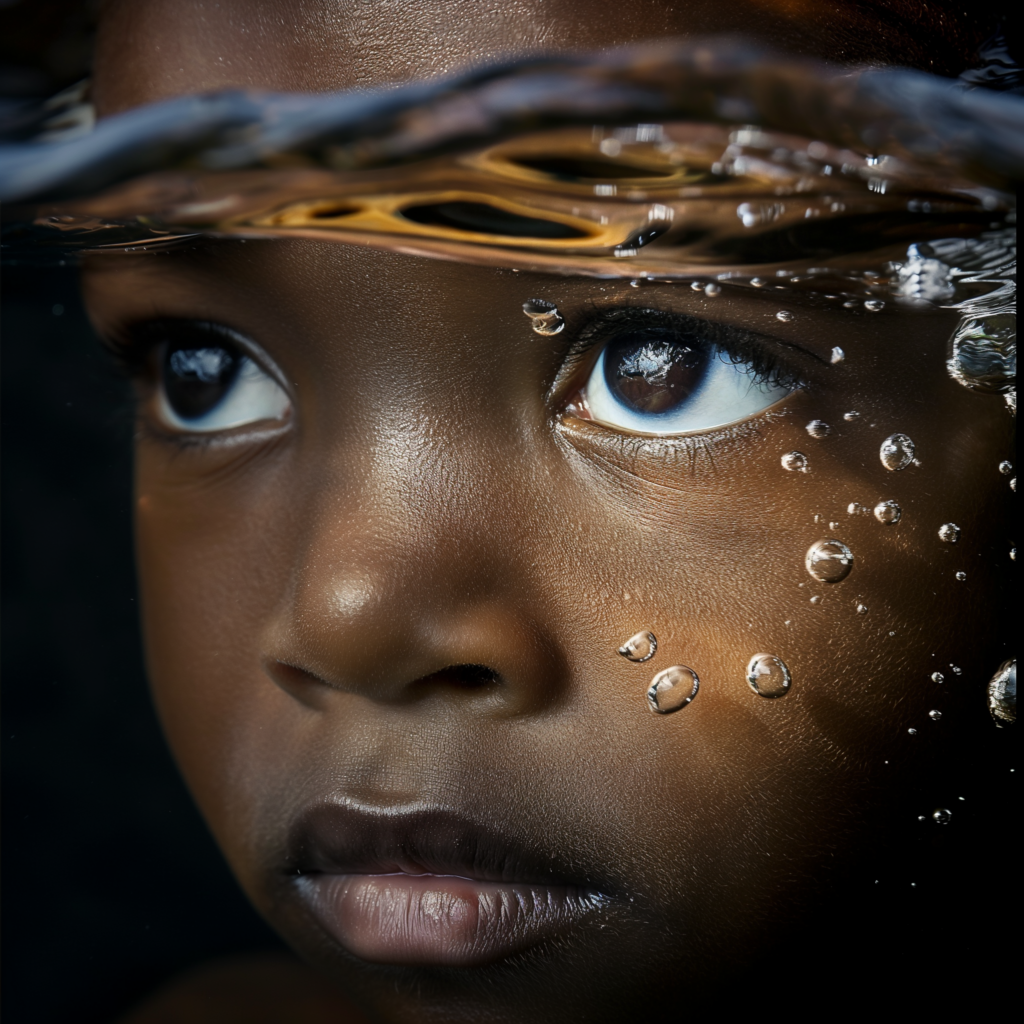
In fine art photography, look deep into impactful themes like love or identity. Add thematic elements such as costumes or scenery to intensify meaning.
Pushing Creative Boundaries in Photography
Step outside your comfort zone in photography. Experiment with different techniques or try unfamiliar mediums like film for added texture.
Creating Visually Impactful and Thought-Provoking Images
Strive for strong, evocative photos. Focus on details like light direction; contrasts enhance appeal and stir emotions.
Example: For a series demonstrating isolation, empty cityscapes during twilight can depict loneliness effectively without words.
| Aspect | Description | Narrative Arc | Advantages | Disadvantages |
|---|---|---|---|---|
| Low ISO | Use minimal noise | Start with scene setting, follow by detail shots, end strongly | Good for low light, reduces noise | Limited to low light situations |
| High ISO | Allows for faster shutter speeds | Begin with action shots, follow with contextual mid-range shots, and end with close-ups to highlight details and textures. | Good for fast-moving subjects, more versatile | Increases noise |
| Name | Concept | Elements |
|---|---|---|
| Solitude | Feeling alone among the crowd | Sparse streets, single subject |
| Time | The passage and impact of time | Clocks, aging subjects, ruins |
| Settings | Bright Photo | Low Speed |
|---|---|---|
| Use minimal noise | Bright Photo | Low Speed |
What Should You Be Using Post-Processing?

Editing Images for Color Correction and Enhancement
Editing your photos is key to making them look their best. A useful trick is color correction – it can transform a good photo into a great one. Tinkering with light exposure, contrast, and color intensity really brings out the best in an image. But go easy on the adjustments; often less is more. Aim for a realistic finish, unless you’re aiming for a more dramatic or artistic effect.
Retouching to Improve Skin Tones and Textures
Next up is retouching, which lets you polish the finer details. For example, in portraits, you should gently improve skin tones and textures without erasing natural skin marks. I’ve learned from experience that too much smoothing can make people look fake, almost like dolls. The trick is to remove clear blemishes and balance skin color while preserving some texture. You want folks to appear as their true selves, not as figurines.
Adding Creative Effects and Filters
I love this part – using creative effects and filters! It’s similar to putting just the right amount of spice in food. A touch of darkness around the edges, known as vignette, can draw the eye; a little bit of blur adds depth. Feel free to experiment with various filters to find the perfect fit for your pictures. Just remember: if you’re working on a collection of photos, keep the look uniform. Be selective with filters; choose the ones that enhance your personal touch.
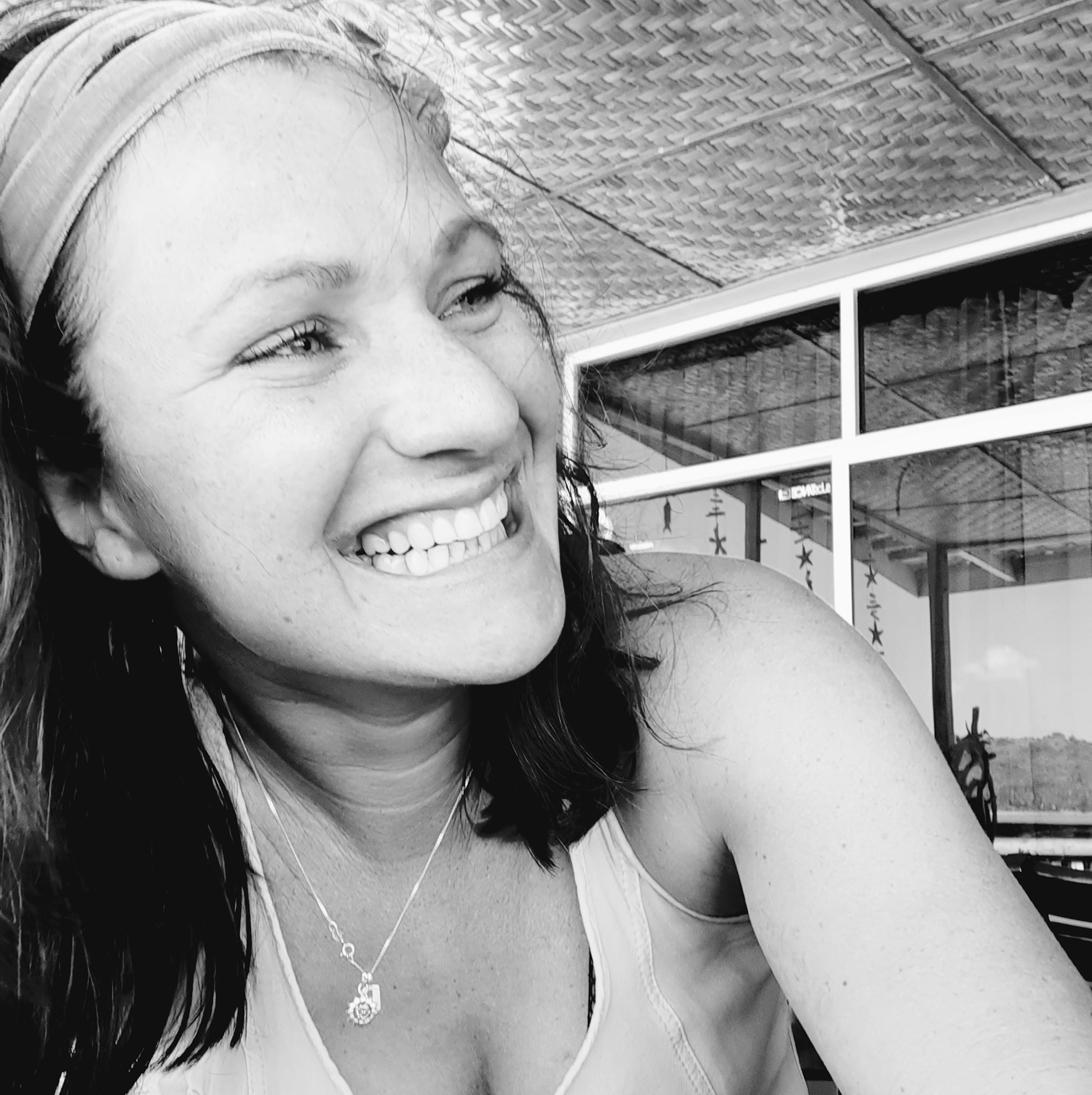
About Author
Rachel Noël is a professional photographer and videographer from the UK with over 10+ years of experience. Rachel specializes in Underwater, Tavel & Portrait photography among other areas.
